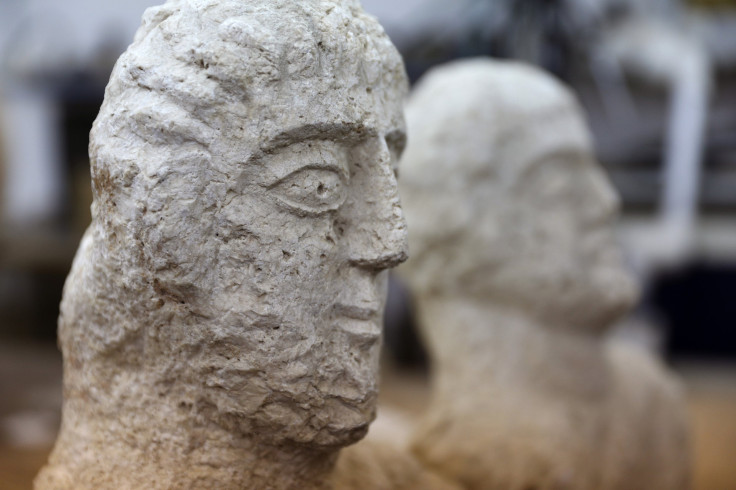Mexican Temple To Pre-Hispanic Fertility God Portrayed As Skinned Human Corpse Discovered

Experts from Mexico’s National Institute of Anthropology and History found the first temple of the flayed god Xipe Totec (“our lord of the flayed”), a pre-Hispanic fertility god depicted as a skinned human corpse. The priests of the temple were said to first flay the victims and would wear their skin.
The findings announced Wednesday included three stone sculptures dedicated to the god and two sacrificial altars.The god’s, Xipe Totec, sculpture was dressed in a skirt of feathers along with a flayed human skin, reported nes.com.au.
“Sculpturally it is a very beautiful piece,” experts wrote. “It measures approximately 80 centimeters high and has a hole in the belly that was used, according to sources, to place a green stone and ‘endow them with life’ for ceremonies.”
Mexican Archaeologists Discover Pre-Hispanic Temple of 'The Flayed Lord' https://t.co/p95fkzRs7a
— NPR (@NPR) January 3, 2019
The institute said it was discovered during recent excavations of Popoloca Indian ruins in the central state of Puebla, reported Fox Nation.
The discovery is being hailed as significant, given the finding of the whole temple and not just the depiction of the deity, which had been the case in earlier findings of other similar cultures.
University of Florida archaeologist Susan Gillespie, who was not involved in the research, wrote that "finding the torso fragment of a human wearing the flayed skin of a sacrificial victim in situ is perhaps the most compelling evidence of the association of this practice and related deity to a particular temple, more so to me than the two sculpted skeletal crania," reported Associated Press.
“If the Aztec sources could be relied upon, a singular temple to this deity (whatever his name in Popoloca) does not necessarily indicate that this was the place of sacrifice,” Gillespie wrote. “The Aztec practice was to perform the sacrificial death in one or more places and to ritually store the skins in another, after they had been worn by living humans for some days. So it could be that, this is the temple where they were kept, making it all the more sacred.
While explaining the structure of the god, Xipe Totec, experts said it had two skull-like stone carvings and a stone trunk. The statue also had an extra hand loosely attached to one arm, suggesting the god was donned with the skin of sacrificed victim.
“It had an extra hand dangling off one arm, suggesting the god was wearing the skin of a sacrificial victim," the Associated Press reported. This ritual by as described from Aztec sources was believed essential to ensure fertility and regeneration, as a way to worship the god.
"Priests worshipped Xipe Totec by skinning human victims first and then donning their skins. The ritual was seen as a way to ensure fertility and regeneration," AP reported.
The Popolocas had built the temple at a complex known as Ndachjian-Tehuacan between A.D. 1000 and 1260 and which was later conquered by the Aztecs.
The excavated temple’s structure seemed to be matching with the ancient descriptions of rituals, which suggested that the victims were killed in a gladiator style combat on one platform and skinned on the other.
News.com.au reported the excavated site was 12m long and 3.5m in height. It is a portion of a larger walled compound. “You know where you’re going to start but not when you’re going to finish or what you’ll find,” said archaeologists.
The god, Xipe Totec, was an important religious figure back then and yet no findings were established till now, was itself surprising for experts.
The altars and sculptures have been moved to the Museum of Sitio de Tehuacan for safe keeping.
© Copyright IBTimes 2024. All rights reserved.





















